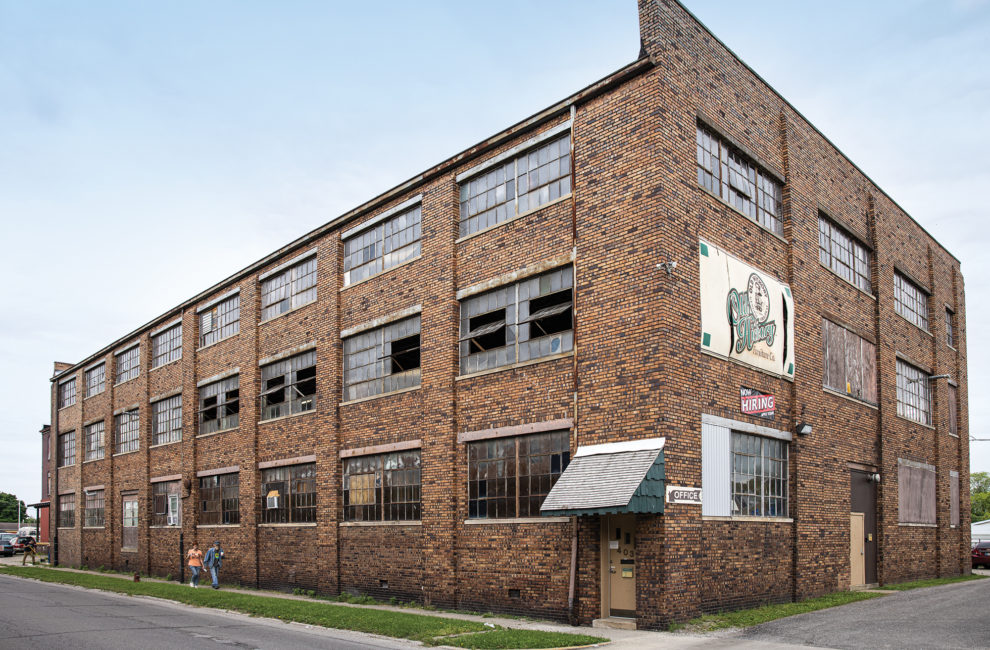
The Old Hickory factory at 403 S. Noble St. was once the headquarters of the Shelbyville Desk Company, and dates back to 1887.
The Deep-Rooted History Of Old Hickory

Outside the Old Hickory factory in Shelbyville, stacks of Hickory saplings dry in “The Yard.” Although the business has been around since the 19th century, it moved to this building in 1982.

Longtime Old Hickory employee Ron Barngrover works at the doweling machine, creating tenons (whittled ends) for chair frame pieces.

Drilling templates await the next order. These frames ensure consistency as the craftsmen churn out thousands of tables and chairs each year.
 Employee Esteban Delgadillo pulls a hickory pole from the soaking tank to bend it into hoops used in the business’s most popular chairs. After the hoops dry on the antique forms, they hang on racks until the next stage.
Employee Esteban Delgadillo pulls a hickory pole from the soaking tank to bend it into hoops used in the business’s most popular chairs. After the hoops dry on the antique forms, they hang on racks until the next stage.

Newcomer Luis Vega uses the sanding machine to smooth the rough edges off a hickory pole.

Tamera Rosenberg sands a Wilderness chair frame, the last step before it goes to the finishing area where it will be upholstered.

Natashia Ramirez and Mariela Gaona, a mother and daughter team, work together to cane a Blue Mountain Lake bed frame.

Terry Martin, the business’s senior finishing craftsman, sprays a top coat of sealant on a reclaimed barnwood table.
 Veteran seamstress Maria Salazar pulls a variety of cloth from the fabric room to sew slipcovers and pillows. Another craftsman handles the tacking of a Gatlinburg dining chair.
Veteran seamstress Maria Salazar pulls a variety of cloth from the fabric room to sew slipcovers and pillows. Another craftsman handles the tacking of a Gatlinburg dining chair.

Once hand-drawn, the designs for Old Hickory’s furniture were transferred to CAD renderings in the 1990s.

A roomful of completed chair frames hints at the productivity of the factory. In a typical year, the owners ship as many as 10,000 tables, chairs, and other items.

A finished Smoky Mountain side chair leaves the upholstery department on a conveyor belt, heading to final inspection.









